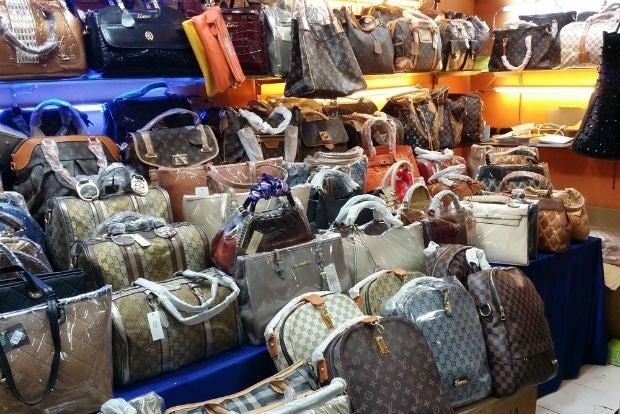
China serves as a starting point for more than half of the counterfeit goods coming through Europe, according to a new study that provides a big-picture look at how trademark infringement is affecting not only Western luxury brands, but Chinese companies too.
The recent squabble between Alibaba and the International AntiCounterfeiting Coalition has turned plenty of attention toward the complexities surrounding luxury brands' battles with counterfeits in China. And yet, while Western brands are dealing with Chinese copycats, as in the case of Under Armour imitator Uncle Martian, there are also Chinese brands struggling to retain control over their intellectual property. This week, Chinese telecommunications equipment maker Huawei made the news when it sued Samsung over patent infringement, joining a growing list of brands dealing with similar quarrels.
A recently released report by the Organisation for Economic Co-operation and Development (OECD) analyzes new data from the EU intellectual property office cataloging about half a million customs seizures in Europe between 2011 and 2013. The report revealed that the counterfeit market accounted for about 5 percent of all European imports in 2013, up from 1.9 percent in 2008. Counterfeits also amounted to about 2.5 percent, or $461 billion, of global trade.
“The findings of this new report contradict the image that counterfeiters only hurt big companies and luxury goods manufacturers,” said OECD deputy secretary-general Doug Frantz. “They take advantage of our trust in trademarks and brand names to undermine economies and endanger lives.”
It comes as little surprise that the report put the spotlight on China as the largest producer of counterfeit goods. Hong Kong was listed at number one, with the mainland as the number two “provenance economy,” meaning it either produces fakes or serves as a transit point for them. Out of the total number of seizures, 63.2 percent originated in China.
When it comes to categories of items affected, footwear takes the lead spot with over 25,000 seizures in 2013, with Nike being the most frequently counterfeited brand. Coming in at number two is knitwear, with leather goods at number three, electronics number four, and watches fifth. Over the three-year period, electronics dropped two spots in ranking, while watches became more prevalent in customs seizures, gaining two spots.
Of course, just because the items seized were counterfeit doesn't mean they were cheap. The report provides a case study on how high-end fashion and accessory brands Rolex, Ray-Ban, and Louis Vuitton served as examples of how prices can vary widely when it comes to fakes. Values posted for a Louis Vuitton bag, according to the report, ranged from $5 to $1,500, while counterfeit Rolex watches were valued at up to $20,000. In other words, when manufacturers of counterfeits aim to deceive the consumer, they price the items higher, while a lower price is marketed at a lower-end consumer. This often happens in China, as mentioned in Jing Daily's report, China's Online Gray Market and Counterfeits.
Also, the report sheds some light on exactly how many Chinese companies were affected by intellectual property theft. Of course, those figures still pale in comparison to the number of U.S. and European brands affected by counterfeiting. In 2013, just 1.3 percent of the total value of seizures affected the intellectual property rights of Chinese companies, compared to 20 percent for brands from the United States, 14.6 percent for Italian businesses, and 12.1 percent for French companies.